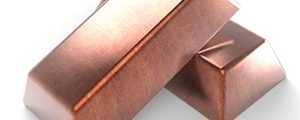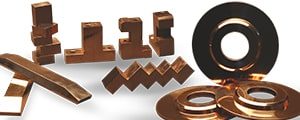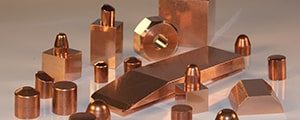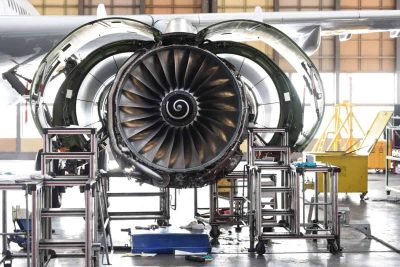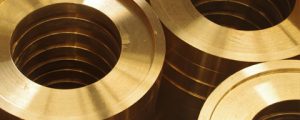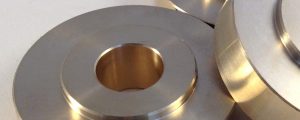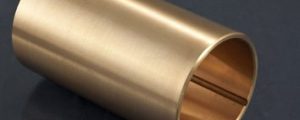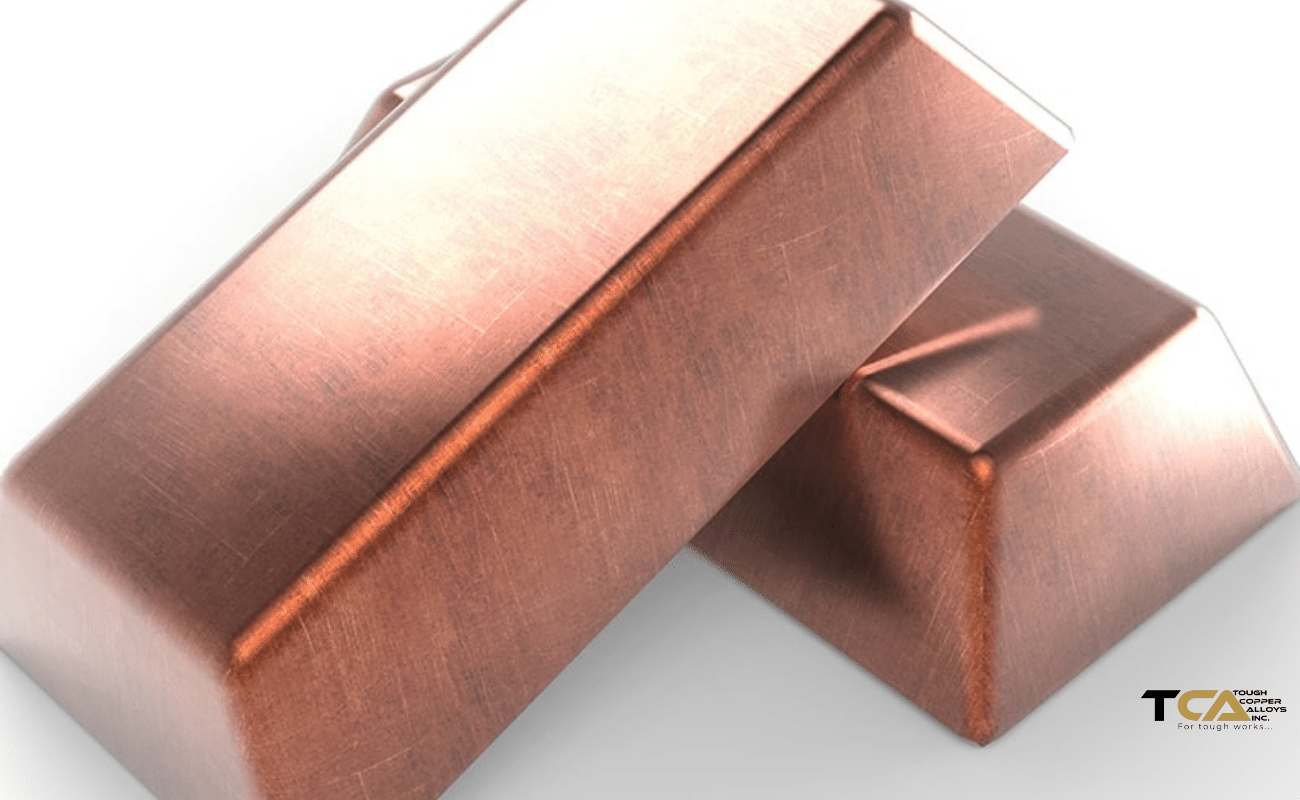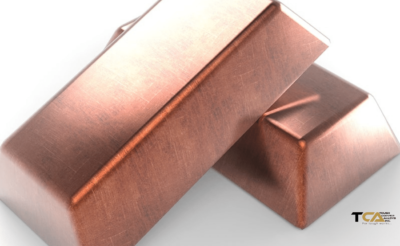What is “Cu-HCP” Material?
Cu-HCP, also known as high-conductivity copper, is a high-performance copper alloy that is known for its exceptional electrical conductivity and excellent corrosion resistance. This versatile alloy is commonly used in a wide range of applications due to its unique properties.
Cu-HCP is a type of copper alloy that contains a small amount of phosphorus, typically around 0.02-0.04%. The addition of phosphorus improves the electrical conductivity of copper and also enhances its mechanical properties such as strength and ductility. This copper alloy has a conductivity level that is comparable to that of silver-plated copper wire, but it is less expensive and has better corrosion resistance.
One of the most common uses of Cu-HCP is in the electrical and electronic industry, where it’s used to produce high-performance wire, cable and other electrical components. It’s also commonly used in the automotive industry, where it’s used to produce wiring harnesses, connectors, and other components that require high conductivity and corrosion resistance.
Cu-HCP is also commonly used in the aerospace industry where its high conductivity, excellent corrosion resistance and high thermal conductivity make it a suitable choice for applications such as aircraft wiring and electrical components.
In summary, Cu-HCP is a high-performance copper alloy that is known for its exceptional electrical conductivity, excellent corrosion resistance, and high thermal conductivity. This versatile alloy is commonly used in a wide range of applications such as electrical and electronic industry, automotive industry, aerospace industry, telecommunications industry, renewable energy industry, and high vacuum applications.
Application Areas & Industries
Cu-HCP, also known as high-conductivity copper, is a high-performance copper alloy that is known for its exceptional electrical conductivity and excellent corrosion resistance. This versatile alloy is commonly used in a wide range of applications and industries due to its unique properties.
- Electrical and Electronic Industry: Cu-HCP is widely used in the electrical and electronic industry due to its high electrical conductivity and excellent corrosion resistance. It’s commonly used in the production of wire, cable, and other electrical components. Additionally, Cu-HCP is also commonly used in the production of electronic components, connectors, and other electrical equipment.
- Automotive Industry: Cu-HCP is also commonly used in the automotive industry due to its excellent electrical conductivity and corrosion resistance. It’s used in the production of various electrical components such as wiring harnesses and connectors.
- Aerospace Industry: Cu-HCP is also used in the aerospace industry, especially in applications that require high-performance materials that can withstand harsh environments. Its high electrical conductivity, excellent corrosion resistance, and high thermal conductivity make it a suitable choice for applications such as aircraft wiring and electrical components.
- Telecommunications Industry: Cu-HCP is commonly used in the telecommunications industry due to its high electrical conductivity and excellent corrosion resistance. It is commonly used in the production of high-purity copper foils, which are used in a variety of electronic applications such as LCD displays and solar cells.
- Renewable Energy Industry: Cu-HCP is also used in renewable energy industry for its high electrical conductivity and excellent corrosion resistance, it’s commonly used in the production of solar cells, wind turbine generators and other components.
- High Vacuum Applications: Cu-HCP is also used in vacuum and ultra-high vacuum applications due to its high conductivity and corrosion resistance, it’s commonly used in the construction of vacuum chambers, vacuum pumps, and other components that require high vacuum.
In summary, Cu-HCP is a versatile alloy that has a wide range of uses, including electrical and electronic industry, automotive industry, aerospace industry, telecommunications industry, renewable energy industry, and high vacuum applications. Its exceptional electrical conductivity, excellent corrosion resistance and high thermal conductivity make it an ideal choice for a wide range of industries that require high-performance materials.
Fabrication Processes
Cu-HCP, also known as high-conductivity copper, is a high-performance copper alloy that is known for its exceptional electrical conductivity and excellent corrosion resistance. This versatile alloy is commonly used in a wide range of applications and industries, and can be fabricated into a variety of forms to meet specific requirements.
- Hot and Cold Rolling: Cu-HCP can be fabricated into sheet, strip, and plate forms by hot and cold rolling. Hot rolling is typically used to reduce the thickness of the alloy, while cold rolling is used to reduce the thickness and improve the surface finish of the alloy.
- Drawing: Cu-HCP can be fabricated into wire form by drawing. This process involves pulling the alloy through a die to reduce its cross-sectional area and increase its length. This process can be repeated multiple times to produce wire with a small diameter.
- Extrusion: Cu-HCP can be fabricated into a variety of shapes such as tubing, rods, and profiles by extrusion. This process involves heating the alloy to a plastic state and then forcing it through a die to produce the desired shape.
- Forging: Cu-HCP can be fabricated into complex shapes by forging. This process involves heating the alloy to a plastic state and then applying pressure to shape it into the desired form.
- Machining: Cu-HCP can be fabricated into precision components by machining. This process involves cutting, grinding, drilling, and other operations to produce parts with precise dimensions and tolerances.
- Welding: Cu-HCP can be fabricated into complex shapes by welding. This process involves joining two or more pieces of the alloy by heating them to a plastic state and then applying pressure to fuse them together.
In summary, Cu-HCP is a versatile alloy that can be fabricated into a variety of forms by using common fabrication processes such as hot and cold rolling, drawing, extrusion, forging, machining, and welding. These processes allow Cu-HCP to be customized to meet the unique requirements of different applications and industries.
Chemical Composition
Cu-HCP, also known as high-conductivity copper, is a high-performance copper alloy that is known for its exceptional electrical conductivity and excellent corrosion resistance. This versatile alloy is commonly used in a wide range of applications and industries, and its properties are largely determined by its chemical composition.
The primary element in Cu-HCP is copper (Cu), which is typically present in amounts of 99.9%. The remaining elements present in the alloy are primarily impurities and are present in trace amounts.
One of the most important elements that is present in Cu-HCP is phosphorus (P), which is typically present in amounts of 0.02-0.04%. Phosphorus improves the electrical conductivity of copper and also enhances its mechanical properties such as strength and ductility.
Other impurities that may be present in small amounts include elements such as oxygen (O), sulfur (S), and nitrogen (N). These elements can affect the properties of the alloy, but they are typically present in amounts less than 0.01%.
In summary, Cu-HCP is a high-performance copper alloy that is composed primarily of copper (Cu) and a small amount of phosphorus (P). The addition of phosphorus improves the electrical conductivity of copper and also enhances its mechanical properties such as strength and ductility. The alloy also contains small amounts of impurities such as oxygen (O), sulfur (S), and nitrogen (N) which can affect the properties of the alloy but are typically present in amounts less than 0.01%.
| Elements | ||
|---|---|---|
| Cu(1,2) | P | |
| (1) Cu value includes Ag. (2) Includes P. |
||
| Min (%) | 99.95 | 0.001 |
| Max (%) | 0.005 | |
Physical Properties
Cu-HCP, also known as high-conductivity copper, is a high-performance copper alloy that is known for its exceptional electrical conductivity and excellent corrosion resistance. This versatile alloy is commonly used in a wide range of applications and industries, and its properties are largely determined by its chemical composition and heat treatment. Here are some of the physical properties that make Cu-HCP so versatile:
- Electrical Conductivity: Cu-HCP has a high electrical conductivity that is comparable to that of silver-plated copper wire. This makes it an ideal choice for applications that require high conductivity such as electrical and electronic industry, automotive industry, aerospace industry, telecommunications industry, renewable energy industry.
- Corrosion Resistance: Cu-HCP has excellent corrosion resistance, which makes it suitable for use in harsh environments and applications that require corrosion resistance such as automotive industry, aerospace industry, telecommunications industry, and renewable energy industry.
- Thermal Conductivity: Cu-HCP has a high thermal conductivity, which makes it an ideal choice for applications that require high thermal conductivity such as aerospace industry and renewable energy industry.
- Density: Cu-HCP has a density of 8.89 g/cm³.
- Melting Point: Cu-HCP has a melting point of 1083°C.
- Tensile strength: Cu-HCP has a tensile strength of around 340-380 N/mm²
In summary, Cu-HCP is a high-performance copper alloy that is known for its exceptional electrical conductivity, excellent corrosion resistance, high thermal conductivity, density, melting point and tensile strength. These properties make it an ideal choice for a wide range of applications and industries that require high-performance materials that can withstand harsh environments and demanding conditions.
Fabrication Properties
Cu-HCP, also known as high-conductivity copper, is a high-performance copper alloy that is known for its exceptional electrical conductivity and excellent corrosion resistance. This versatile alloy is commonly used in a wide range of applications and industries and its fabrication properties make it a suitable choice for a wide range of applications.
- Formability: Cu-HCP has good formability, making it easy to fabricate into various shapes and forms, it can be fabricated into sheet, strip, plate, wire, rod, and tubing.
- Machinability: Cu-HCP has good machinability, making it easy to machine into precision components using various machining processes such as turning, drilling, milling, and grinding.
- Weldability: Cu-HCP has good weldability, making it easy to join two or more pieces of the alloy by heating them to a plastic state and then applying pressure to fuse them together.
- Corrosion Resistance: Cu-HCP has excellent corrosion resistance, which makes it suitable for use in harsh environments and applications that require corrosion resistance.
- Thermal Conductivity: Cu-HCP has a high thermal conductivity, which makes it an ideal choice for applications that require high thermal conductivity such as aerospace industry and renewable energy industry.
- Ductility: Cu-HCP has high ductility which allows it to be bent and shaped easily into a variety of forms.
In summary, Cu-HCP is a high-performance copper alloy that is known for its exceptional electrical conductivity, excellent corrosion resistance, high thermal conductivity, good formability, machinability, weldability, ductility, making it an ideal choice for a wide range of applications and industries that require high-performance materials that can withstand harsh environments and demanding conditions.
Applicable Specifications
Cu-HCP, also known as high-conductivity copper, is a high-performance copper alloy that is known for its exceptional electrical conductivity and excellent corrosion resistance. This versatile alloy is commonly used in a wide range of applications and industries, and its properties are largely determined by its chemical composition and heat treatment. To ensure the quality and consistency of the alloy, it is important to adhere to the applicable specifications.
- ASTM B124: This specification covers the requirements for copper alloy sand castings, permanent mold castings, and centrifugal castings for general industrial use.
- ASTM B187: This specification covers the requirements for copper alloy rod, bar, and wire for general industrial use.
- ASTM B188: This specification covers the requirements for copper alloy strip for general industrial use.
- ASTM B189: This specification covers the requirements for copper alloy plate for general industrial use.
- ASTM B280: This specification covers the requirements for seamless copper tube for air conditioning and refrigeration field service.
- ASTM B449: This specification covers the requirements for copper alloy continuous cast rod for electrical resistance heating.
In summary, Cu-HCP is a high-performance copper alloy that is commonly used in a wide range of applications and industries, it’s properties are largely determined by its chemical composition and heat treatment, and to ensure the quality and consistency of the alloy, it is important to adhere to the applicable specifications such as ASTM B124, ASTM B187, ASTM B188, ASTM B189, ASTM B280 and ASTM B449.
Thermal Features
Cu-HCP, also known as high-conductivity copper, is a high-performance copper alloy that is known for its exceptional electrical conductivity and excellent corrosion resistance. This versatile alloy is commonly used in a wide range of applications and industries, and its thermal properties make it a suitable choice for a wide range of applications that require high thermal conductivity.
- Thermal Conductivity: Cu-HCP has a high thermal conductivity, which makes it an ideal choice for applications that require high thermal conductivity such as aerospace industry and renewable energy industry.
- Thermal Expansion: Cu-HCP has a low coefficient of thermal expansion, which means that it expands very little with temperature change.
- Specific Heat: Cu-HCP has a specific heat of 0.39 J/g.°C
- Melting Point: Cu-HCP has a melting point of 1083°C.
- Heat Treatment: Cu-HCP can be heat treated to improve its properties, it can be annealed, quenched and tempered.
In summary, Cu-HCP is a high-performance copper alloy that is known for its exceptional electrical conductivity, excellent corrosion resistance, high thermal conductivity, low coefficient of thermal expansion, specific heat, melting point and can be heat treated. These thermal properties make it an ideal choice for a wide range of applications and industries that require high-performance materials that can withstand high temperature and demanding conditions.
General Uses
Product Category: Electrical and Electronic Industry
Product: Wiring and Connectors
Reason Category: High Electrical Conductivity
Reason: Cu-HCP’s high electrical conductivity makes it an ideal choice for the production of electrical and electronic components such as wiring and connectors.
Product Category: Automotive Industry
Product: Wiring Harnesses and Battery Terminals
Reason Category: Corrosion Resistance and High Electrical Conductivity
Reason: Cu-HCP’s corrosion resistance and high electrical conductivity make it an ideal choice for the production of automotive components such as wiring harnesses and battery terminals.
Product Category: Aerospace Industry
Product: Heat Exchangers and Fuel Cells
Reason Category: High Thermal Conductivity, Corrosion Resistance, and High Electrical Conductivity
Reason: Cu-HCP’s high thermal conductivity, corrosion resistance, and high electrical conductivity make it an ideal choice for the production of aerospace components such as heat exchangers and fuel cells.
Product Category: Telecommunications Industry
Product: Wiring and Connectors
Reason Category: High Electrical Conductivity and Corrosion Resistance
Reason: Cu-HCP’s high electrical conductivity and corrosion resistance make it an ideal choice for the production of telecommunications components such as wiring and connectors.
Product Category: Renewable Energy Industry
Product: Solar Cells and Wind Turbine Generators
Reason Category: High Electrical Conductivity and Corrosion Resistance
Reason: Cu-HCP’s high electrical conductivity and corrosion resistance make it an ideal choice for the production of renewable energy components such as solar cells and wind turbine generators.
Product Category: Construction Industry
Product: Roofing and Flashing, Gutter and Downspout
Reason Category: Corrosion Resistance and High Electrical Conductivity
Reason: Cu-HCP’s corrosion resistance and high electrical conductivity make it an ideal choice for the production of construction-related products such as roofing and flashing, gutter and downspout.
Product Category: Industrial Equipment and Machinery
Product: Motors, Generators, and Transformers
Reason Category: High Electrical Conductivity and Corrosion Resistance
Reason: Cu-HCP’s high electrical conductivity and corrosion resistance make it an ideal choice for the production of industrial equipment such as motors, generators, and transformers.
It’s important to note that these are typical uses and there may be other products and reasons for using Cu-HCP that are not listed here.
Alternates
Several materials can be used as an alternative to Cu-HCP, depending on the specific application and desired properties. Some of the materials that can be used instead of Cu-HCP include:
- Silver: Silver has a higher electrical conductivity than Cu-HCP, making it a good alternative for applications that require high electrical conductivity.
- Copper-Nickel alloys (Cu-Ni): Copper-nickel alloys have a higher corrosion resistance than Cu-HCP, making them a good alternative for applications that require high corrosion resistance.
- Aluminum: Aluminum has a lower density and higher thermal conductivity than Cu-HCP, making it a good alternative for applications that require high thermal conductivity and lightweight materials.
- Gold: Gold has a higher electrical conductivity than Cu-HCP, and a higher resistance to corrosion, making it a good alternative for applications that require high electrical conductivity and corrosion resistance.
- Copper-Tin alloys (Cu-Sn): Copper-Tin alloys have a higher corrosion resistance than Cu-HCP, making them a good alternative for applications that require high corrosion resistance.
- Copper-Zinc alloys (Cu-Zn): Copper-Zinc alloys have a higher corrosion resistance than Cu-HCP, making them a good alternative for applications that require high corrosion resistance.
It’s important to note that each material has its own unique properties, and the choice of material will depend on the specific requirements of the application. It’s also important to consult with experts or conduct testing to determine the best alternative material for a specific application.

